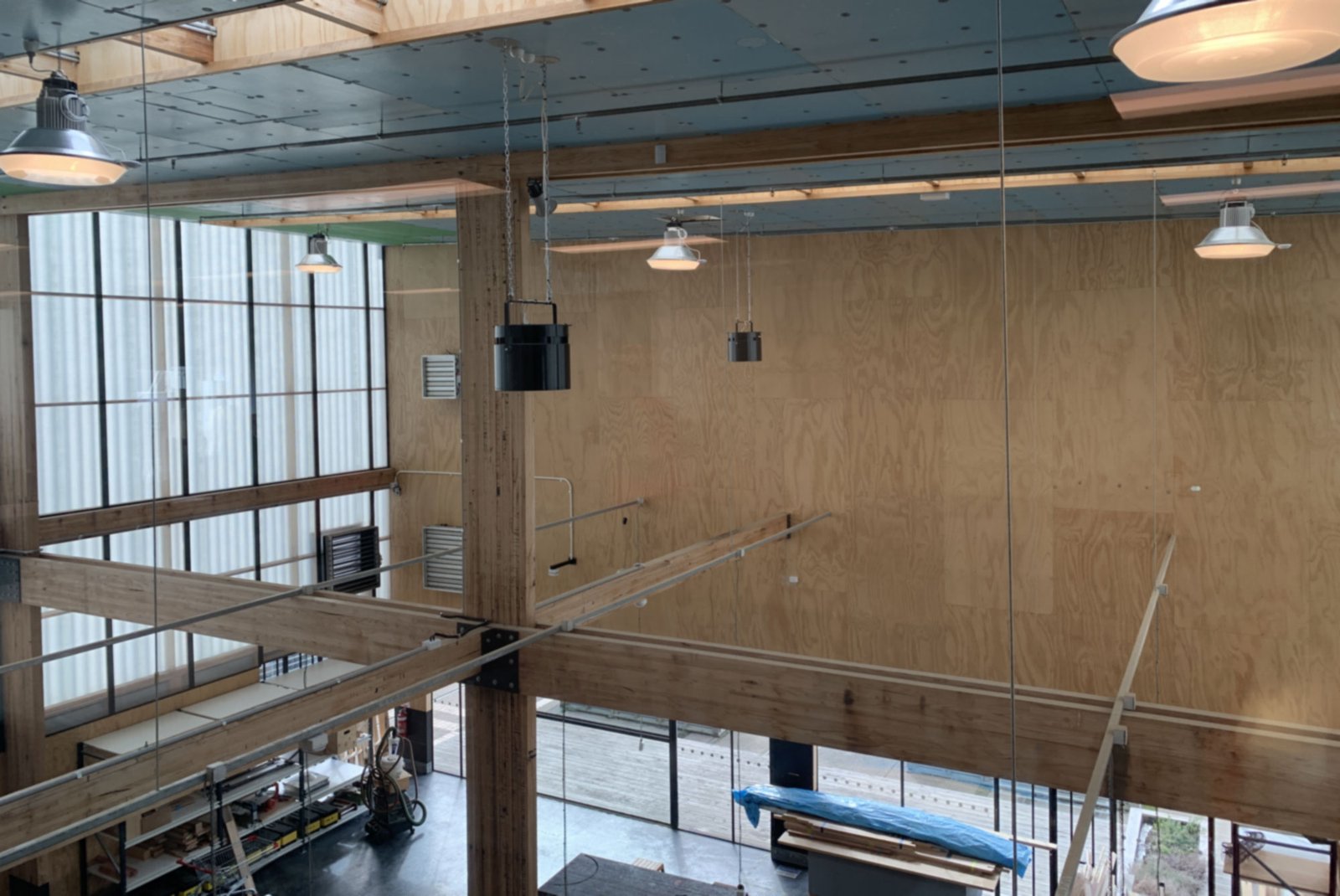
In PART ONE of this series we unpacked some of the unique challenges of cooling large spaces and how destratification can make cooling warehouses, sports halls and other large spaces particularly difficult.
In this instalment we will take a closer look at the main reasons why large facilities need to prioritise the implementation of effective cooling solutions as a matter of urgency:
1. Occupant Health & Safety
One of the primary risks associated with inadequate cooling in large spaces is the potential impact on occupant health and wellbeing – and for employers or facilities, OH&S (Occupational Health & Safety).
Sports halls and warehouses are frequently bustling with activity, filled with lots of people and sometimes heat generating machinery or equipment leading to a rise in temperature.
The combination of high temperatures, insufficient airflow or cooling, and in some cases intense labour or exercise within the space, can put occupants (such as workers, students, athletes or spectators) at significant risk, which means a greater likelihood of injuries, accidents, or other negative health outcomes.
Exposure to high temperatures can lead to heat-related illnesses such as heat exhaustion and heatstroke. In extreme cases, individuals may even pass out due to overheating, further emphasising the significant health risks and importance of effective cooling solutions in large spaces.
People fainting not only poses an immediate danger to their personal safety but also creates potential hazards for those around them, leading to a chaotic and potentially dangerous environment.
The reality is that this even has the potential to become a legal risk to the facility, so the importance of ensuring suitable cooling solutions in large spaces cannot be understated.
2. Employee Productivity, Satisfaction & Wellbeing
The impact of comfortable environments on employee productivity and well-being cannot be overstated. Research has consistently shown that individuals working in cooler environments have improved cognitive function, concentration, and decision-making abilities.
Professor Ollie Jay from the University of Sydney, heading up the research on occupational heat stress and the value of fans for cooling in hot and humid working environments such as Vietnam, has published detailed research in March 20191 indicating that:
- An increase in convective flow using a simple electric fan in conditions corresponding to a typical hot occupational environment in South East Asia (30 °C, 70%RH) yielded improvements in cumulative work output, thermal sensation and discomfort at a fixed heart rate of 110 beats min, that were all at least equivalent to those resulting from a ∼7 °C reduction in air temperature.
- Compared to no fan use in conditions representative of a typical hot occupational environment in Southeast Asia (30 °C, 70%RH), the use of a simple electric fan yielded equivalent improvements in work output (∼11%) at a fixed average heart rate (of 110 beats min) to a ∼7 °C reduction in air temperature.
- In parallel, reductions in skin temperature, thermal sensation, and the rate of dehydration, as well as improvements in thermal comfort with fan use compared to no fan use at 30 °C, 70%RH were all similar to a 23 °C, 70%RH (air conditioned) environment.
- Yet fans use 30 times less power than A/C systems.
This supports the notion that comfort and efficient cooling systems can significantly enhance employee performance and productivity in large spaces, ultimately benefitting the overall organisation.
In addition to productivity, creating comfortable and cool spaces fosters a sense of contentment and happiness. Feeling comfortable in their surroundings can have a positive impact on individuals’ mental and emotional well-being, leading to increased job satisfaction and reduced stress levels.
3. Sustainability
Addressing the cooling requirements of large spaces also provides an opportunity for organisations to embrace sustainability.
Through adopting sustainable solutions, businesses demonstrate their commitment to environmental preservation and actively contribute to combating climate change.
Traditional cooling solutions, such as air conditioning, are often power hungry and not environmentally friendly. However thankfully there are now far more sustainable, yet highly effective cooling solutions available, such as Airius fans.
Airius fans are powerful commercial and industrial fan systems designed to offer a low-energy, cost effective air-conditioning alternative for warehouses, sports halls and other large spaces.
The powerful and highly effective large space cooling solutions offered by Airius not only assist facilities to reduce their carbon footprint, but present the opportunity for organisations and facilities to save on energy costs, contributing to long-term financial sustainability.
The Best Time To Install Warehouse Cooling Is NOW
Cooling large indoor spaces like warehouses and sports halls is of paramount importance when it comes to maintaining safety, comfort, and productivity of occupants – now more than ever as global temperatures continue to hit record highs.
By investing in efficient cooling systems, organisations can minimise OH&S risks, prevent overheating-related incidents, enhance employee performance and satisfaction, and contribute to a sustainable future.
Prioritising the well-being and comfort of users of these spaces ultimately leads to a more productive workforce, numerous advantages for facility managers and employers, and a safer, more comfortable environment for all.
Stay tuned for PART THREE of this series where we explore and compare the different large space cooling options available and look at the pros and cons of each, to help you make the most informed decision when it comes to choosing the best warehouse cooling solution.
1. ‘Fanning as an alternative to air conditioning – A sustainable solution for reducing indoor occupational heat stress. Ollie Jay et al – March 2019 – accessed September 2023’





